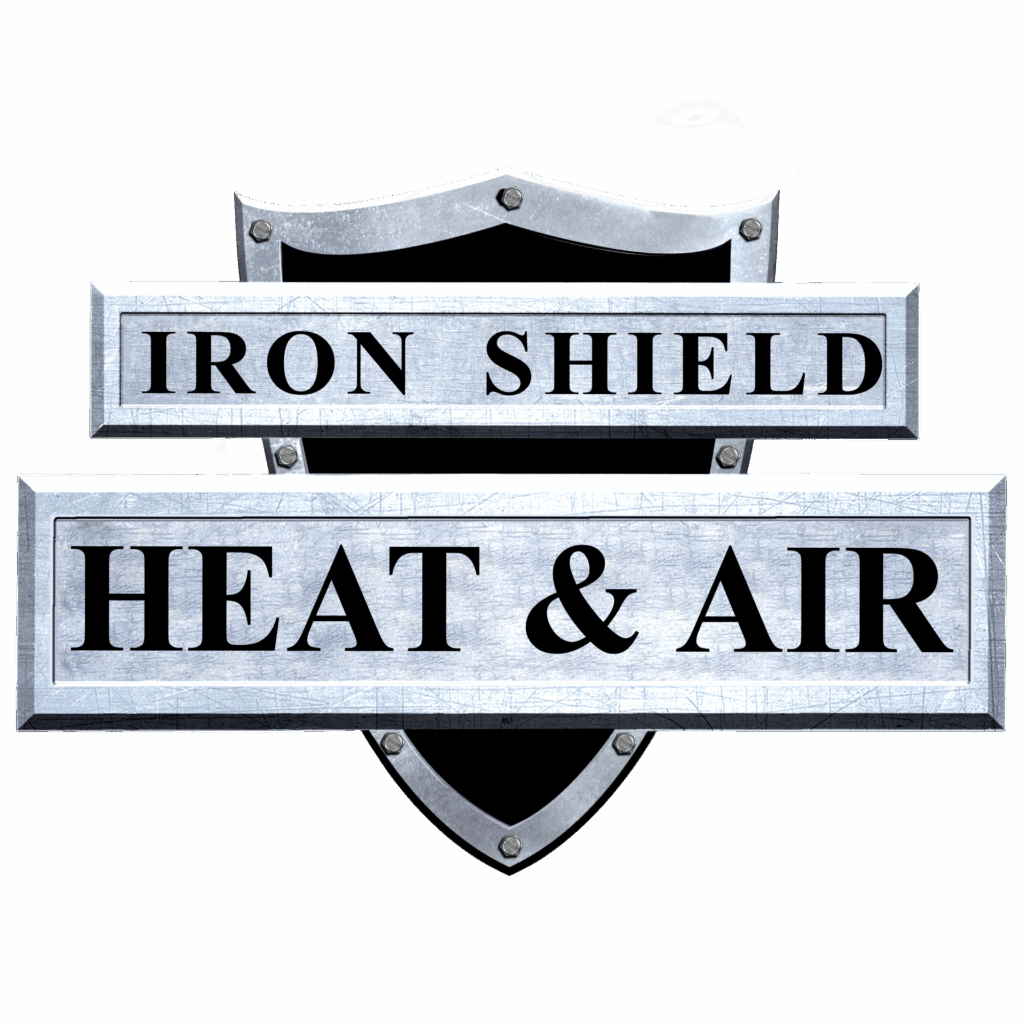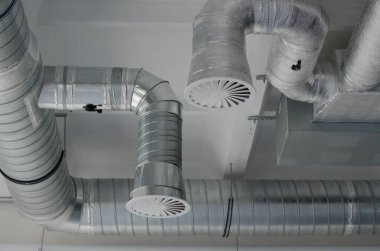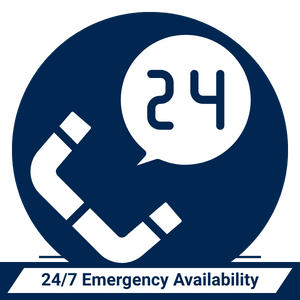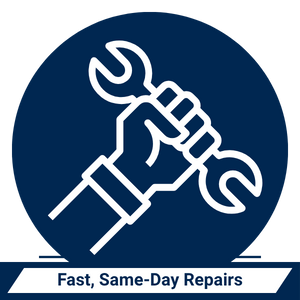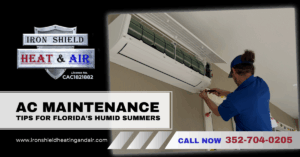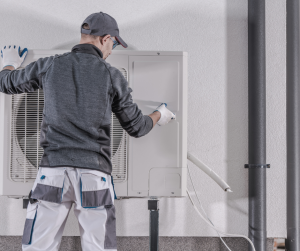A comfortable home requires a functional HVAC system for consistent heating and cooling. Yet, leaky ducts can severely disrupt your home’s climate control, leading to higher energy costs, uneven temperatures, and poor indoor air quality. It may seem minor, but leaky ducts can cost you big in the long run. In this guide, we will break down the impact of duct leaks on your HVAC system, highlight the hidden dangers of ignoring them, and offer solutions for effective repair and prevention.
What Are Leaky Ducts and How Do They Affect Your HVAC System?
Understanding the Basics of HVAC Ductwork
When you think about your HVAC system, what comes to mind? Perhaps the air conditioner or furnace that keeps your home comfortable. But behind these essential systems is an often-overlooked network of air ducts that serves as the lifeline for delivering cooled or heated air throughout your home.
Your duct system is like a series of highways, directing conditioned air from your furnace or air conditioning unit to various rooms. If those ducts leak, it’s like driving on a road with potholes—air escapes, causing inefficiency, higher energy consumption, and wasted resources. The problem is simple: if your ducts leak, your system loses valuable conditioned air before reaching the rooms needed.
How Leaking Ducts Affect Your Heating and Cooling System
Imagine it’s the middle of summer, and your air conditioning system is running non-stop, but you still feel hot spots in some rooms while others are freezing. This is often caused by leaky ductwork. Air leaks out of the ducts before circulating through your home, causing inconsistent cooling and heating.
Moreover, because your HVAC system has to work harder to compensate for the lost air, it can lead to higher energy bills. More energy spent on a system working harder for less result means increased wear and tear on the system’s components. This shortens the lifespan of your air conditioner or furnace, leading to expensive repairs or replacements.
The Hidden Problems Caused by Leaky Ducts
High Energy Bills Due to Leaky Ducts
One of the first red flags you might notice when your ducts leak is a spike in your energy bills. The U.S. Department of Energy estimates that leaky ducts can account for up to 30% of your heating and cooling costs. That’s 30% of your hard-earned money going to waste simply because the conditioned air isn’t reaching the right places.
For instance, spending $200 monthly on energy bills means $60 is lost due to duct leaks. When you repair those leaks, you could see a significant reduction in your monthly bills.
Poor Indoor Air Quality from Duct Leaks
Leaking ducts affect your HVAC system’s efficiency and compromise the air quality inside your home. Contaminants like dust, mold, and allergens can be pulled into your ducts, circulating dirty air throughout your house. This is especially harmful if you suffer from allergies, asthma, or other respiratory conditions.
For instance, imagine that every time your air conditioning or furnace kicks on, it’s not just pushing air into your room but also contaminants into your lungs. Leaky ducts may make it harder for your air filter to trap these particles, further deteriorating the air quality in your home.
Inconsistent Temperature Control Caused by Leaking Ductwork
If you’ve ever walked through a room that feels like a hot desert while the next room feels like an icebox, you know how frustrating uneven temperatures can be. Leaky ducts disrupt the balance of your HVAC system, preventing it from maintaining a consistent temperature across your entire home. As air escapes through the leaks, certain rooms get more conditioned air, while others are left with less. The result? Cold spots in summer and drafty rooms in winter.
How Duct Leaks Impact HVAC Performance
Leaky Ducts and Their Effect on Airflow
At the heart of every HVAC system is the flow of air. Leaky ducts cause significant disruptions in this airflow, reducing the system’s efficiency. When air escapes before reaching its destination, the system has to work harder to compensate. This could lead to higher energy bills, inefficient cooling or heating, and even system breakdowns. The longer you ignore the problem, the worse the airflow becomes, causing your system to struggle and eventually fail.
The Role of Refrigerant in an HVAC System and How Leaky Ducts Affect It
In a typical air conditioning system, refrigerant circulates through the coils, absorbing and releasing heat to cool the air. However, if your ducts are leaking, the refrigerant can’t perform its job as efficiently. This causes your system to work harder to compensate for the lost air, leading to system strain, reduced cooling, and possible damage to the compressor or refrigerant lines.
The Strain on Your Furnace and AC Unit Caused by Leaky Ductwork
Think about the stress you feel when running late, and your car has to work harder to get you to your destination. When leaky ductwork occurs, it happens to your furnace or air conditioning unit. The strain caused by duct leaks leads to increased wear and tear on your HVAC components, which can ultimately cause them to break down earlier than expected. This not only shortens the lifespan of your equipment but also leads to expensive repairs.
The Long-Term Costs of Ignoring Leaking Ducts
Increased Heating and Cooling Costs from Leaking Ducts
The immediate consequence of leaky ducts is a rise in energy bills, but the long-term costs can be even more significant. If left unchecked, your HVAC system will continue to work harder than necessary, leading to a drop in efficiency. As it becomes less efficient, the system consumes more energy, escalating heating and cooling costs.
Wear and Tear on Your HVAC System
Like any machine that works overtime, your HVAC system undergoes wear and tear when forced to compensate for duct leaks. Over time, this results in frequent breakdowns and costly repairs. It’s a vicious cycle: you delay fixing the leaks, your system works harder, and the cost of repairs grows. A proactive approach to duct sealing can save you hundreds, if not thousands, in repair costs.
How a Leaky Ductwork Can Reduce System Efficiency and Lifespan
When your duct leaks, your HVAC system isn’t performing at its peak; this reduces its overall efficiency and accelerates the wear on crucial components. What would’ve been a minor repair now becomes a more significant issue, potentially decreasing the lifespan of your air conditioner or furnace. The result? There is a substantial financial burden down the line.
Solutions for Fixing Leaky Ducts: Sealing and Repairing Ductwork
The Importance of Professional HVAC Services for Duct Sealing
While DIY repairs may seem tempting, professional duct sealing is your best option. Technicians have the right tools and materials to ensure the job is done thoroughly and effectively. They’ll use materials like mastic sealant or aerosol sealants, which are far more durable and efficient than common fixes like duct tape.
A professional inspection will also identify hidden leaks in hard-to-reach areas, ensuring no leaks go undetected. By addressing these issues early on, you’ll increase the longevity and efficiency of your HVAC system.
DIY Tips for Identifying and Repairing Leaking Ducts
If you’re looking for a quick fix, start by inspecting the visible ductwork in your home. Look for signs of dust, dirt, or condensation, as these are often indicators of leaks. Seal minor leaks with mastic tape or duct sealant. However, if the problem persists or you suspect leaks behind walls or ceilings, it’s best to contact a professional.
Benefits of Duct Cleaning and Regular Maintenance
In addition to duct sealing, regular duct cleaning can improve your HVAC system’s airflow and overall performance. Clean ducts ensure that no debris is clogging up your airflow while also improving your indoor air quality. Scheduling routine maintenance checks will keep your system running smoothly and prevent further damage to your ductwork.
How to Improve Indoor Air Quality and Efficiency with Proper Ductwork
Air Filters and Their Role in Preventing HVAC Problems
An often overlooked aspect of duct maintenance is the air filter. A clean air filter traps dust and debris, preventing them from entering your duct system and negatively impacting the airflow. Change your filter regularly to maintain system efficiency and improve indoor air quality.
Enhancing Airflow for Better Cooling and Heating Performance
Ensuring your ducts are sealed and free from obstructions will improve airflow throughout your home. This allows your HVAC system to deliver consistent temperatures, operate more efficiently, and avoid unnecessary stress on its components.
Why You Should Address Leaky Ducts Now
The Health Risks of Poor Air Quality from Leaky Ducts
If you’ve noticed that your allergies are acting up or your family members are coughing more often, leaky ducts could be to blame. Contaminants pulled into your ducts can circulate through your home, worsening indoor air quality and causing respiratory issues. Addressing leaky ducts helps your HVAC system and improves your family’s health.
The Environmental Impact of Inefficient HVAC Systems
An inefficient HVAC system leads to energy waste, negatively impacting the environment. Sealing leaky ducts can reduce your system’s energy consumption, lower your carbon footprint, and contribute to a more sustainable future.
Call to Action: Get Your HVAC System Checked Today
Schedule a Professional HVAC Inspection with IronShield Heating & Air
If you’re noticing problems with your system, don’t wait. Schedule an inspection with IronShield Heating & Air today. Our expert technicians will thoroughly assess your system for any duct leaks and provide solutions to keep your home comfortable and energy-efficient.
The longer you wait to fix leaky ducts, the more money you’ll waste on energy bills and costly repairs. Contact IronShield Heating & Air today to schedule your duct sealing and get your system working efficiently. Start saving costs and enjoy a more comfortable home with our professional HVAC services!
